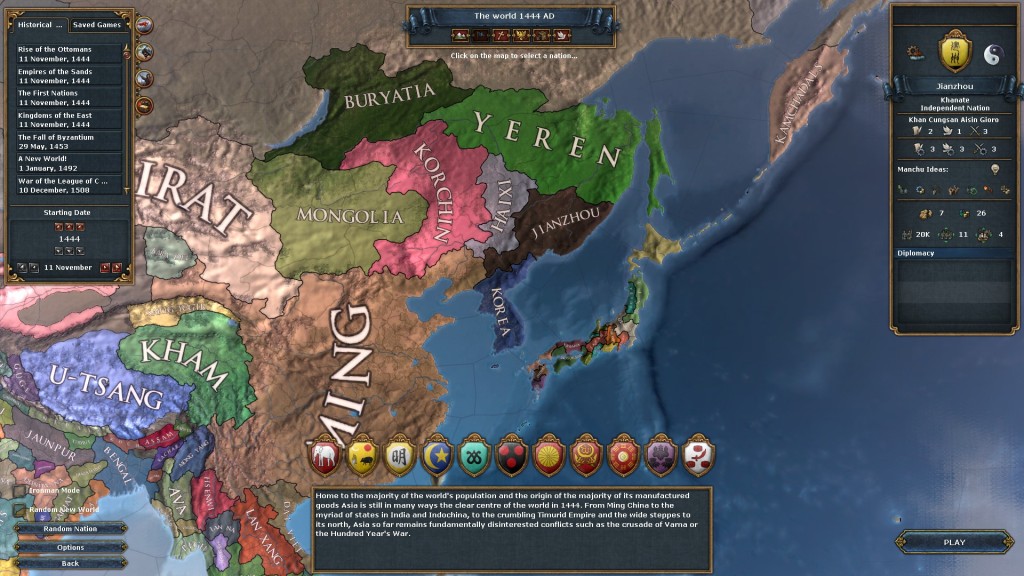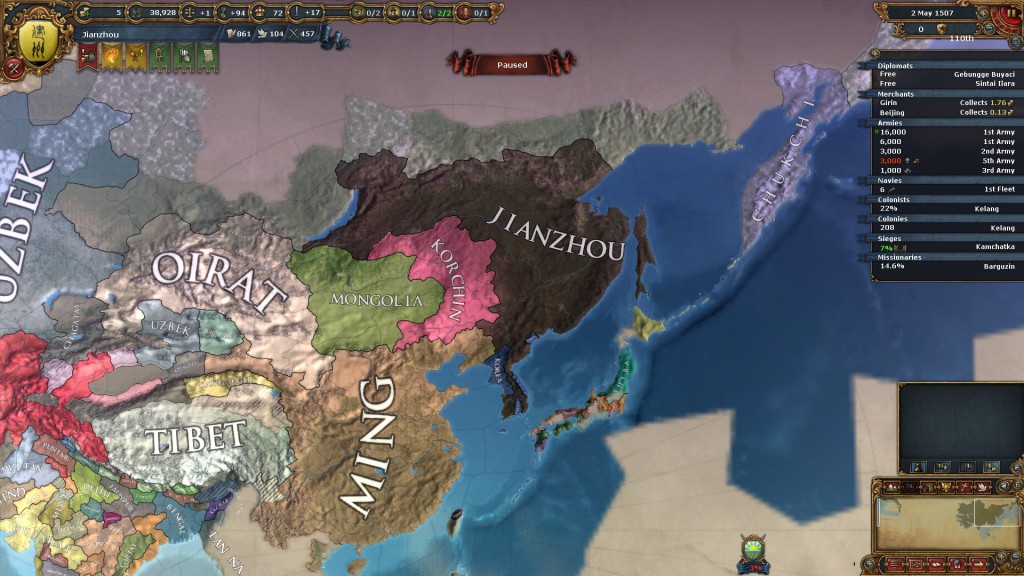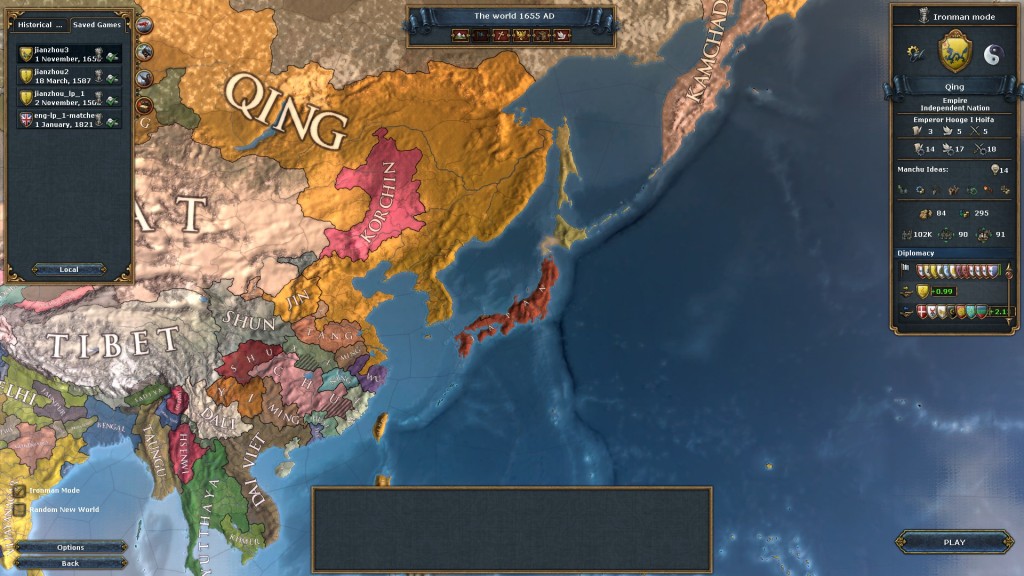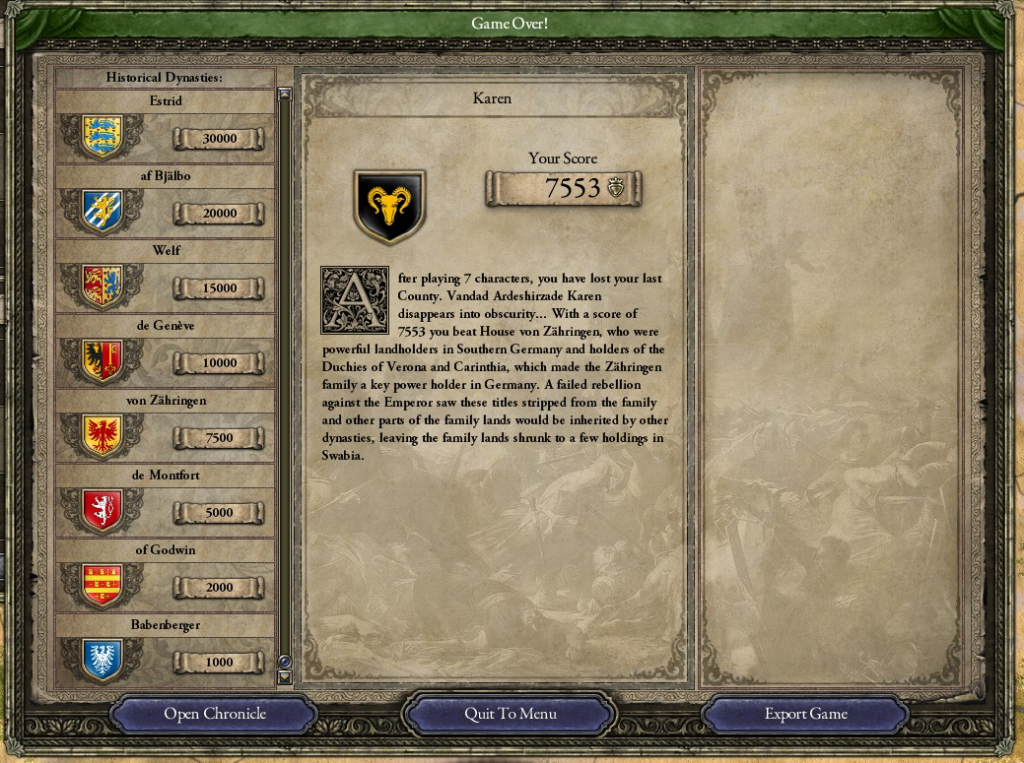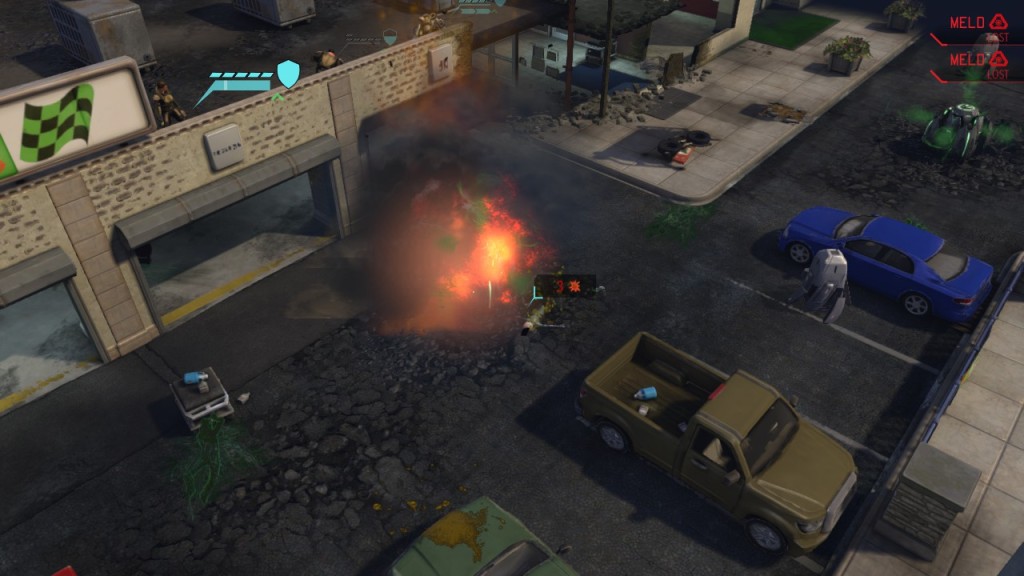The Manchu conquest of Ming China, in which a much smaller, younger state managed to overthrow the greatest empire in the world, is one of those episodes in history that seems tailor-made for a grand strategy game. After recent versions of Europa Universalis IV (the Art of War expansion, the accompanying 1.8 patch, and the subsequent 1.9 patch) fleshed out East Asia and Siberia, I was eager to give the Manchu a spin.
Here are the Jianzhou Jurchens at the start of the game. Historically, their leaders forged a new “Manchu” state and went on to establish China’s final imperial dynasty, the Qing:
It took me three attempts1 to successfully follow in their footsteps. Similar to my pre-Art of War Ayutthaya game, there was a nice progression:
1. Building a power base to the north of Ming China. I began by subjugating the other Manchu tribes, Siberia, and chunks of Korea, and by the 1510s, I was strong enough to fight off a Ming invasion attempt. My counterattack took the northern tip of China, around Beijing. I took the screenshot below shortly before my war with Ming:
2. Pushing into China proper, and Westernising. As early as the 1560s, I was planting outposts on the west coast of North America while simultaneously fighting the Russians to a standstill. Decades later, the Ming were still a paper tiger: after a second war, I briefly held all of coastal China down to the wealthy Yangtze delta. A vicious burst of revolts in occupied China was only a temporary setback: by 1630 I had picked up Western technology (courtesy of my American colonies). The screenshot below depicts the situation a couple of decades later, by which point it was simply a matter of…
3. Mopping up. Once I controlled a decent chunk of China, my manpower, wealth, and technological edge allowed me to snowball through the rest. I spent the rest of the 1600s and 1700s absorbing the remainder of China, fighting the odd war against Europeans, and bullying nearby minnows.
Here are my borders at the end of the game (note that Siberia was a client state of mine). Had I wanted to, I could have pushed much further — I had a standing army of over 180,000 men, manpower reserves of another 300,000, maximum technology, and the most provinces of any nation in the world:
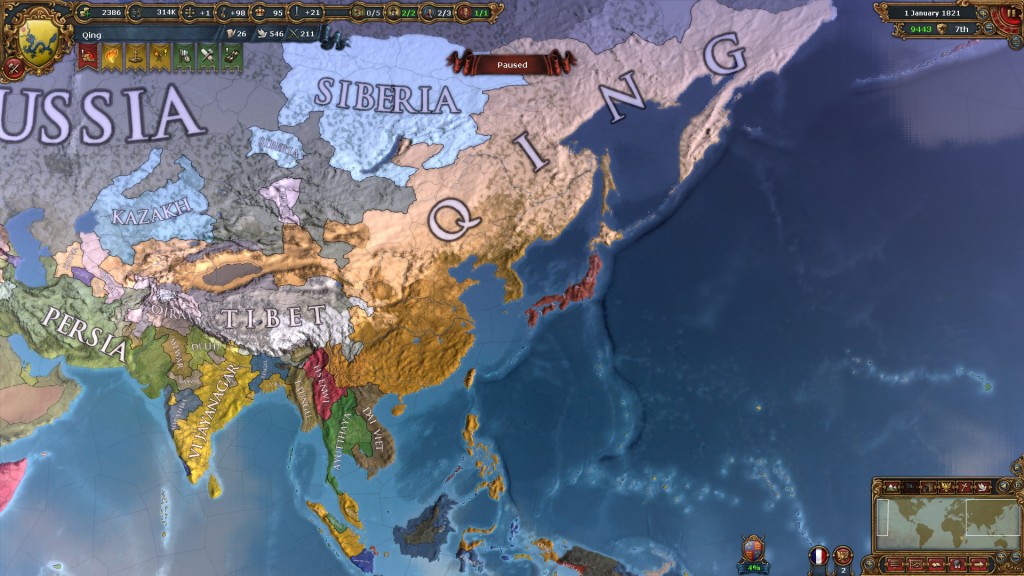 Overall, I had great fun, perhaps more so in the first half of the campaign. I think the second half was held back by a common genre problem — EU4’s mechanics don’t scale well to large empires. Otherwise, I am very pleased with the current version of the game, which addresses one of my longest-running complaints with the series. Even with its late-game problems, I think EU4 is a very good strategy game; and I particularly appreciate that the developers have fleshed out my favourite aspect — the world beyond Europe. If you haven’t played EU4, or if you played back at launch, this would be a great time to jump in.
Overall, I had great fun, perhaps more so in the first half of the campaign. I think the second half was held back by a common genre problem — EU4’s mechanics don’t scale well to large empires. Otherwise, I am very pleased with the current version of the game, which addresses one of my longest-running complaints with the series. Even with its late-game problems, I think EU4 is a very good strategy game; and I particularly appreciate that the developers have fleshed out my favourite aspect — the world beyond Europe. If you haven’t played EU4, or if you played back at launch, this would be a great time to jump in.
I’ve divided the rest of this post into several sections. Below, I elaborate on EU4‘s design (and the state of the game). If you’d like to try forming the Qing, skip to the mini-guide at the end of this post.
- For all three attempts, I played in Ironman mode, which prevents save/reload, gives selected European AI countries a “lucky nations” bonus, and enables Steam achievements. Perhaps Paradox could consider making AI Jianzhou a lucky nation. They fit the description as well as any of the others – France, England, etc. ↩
